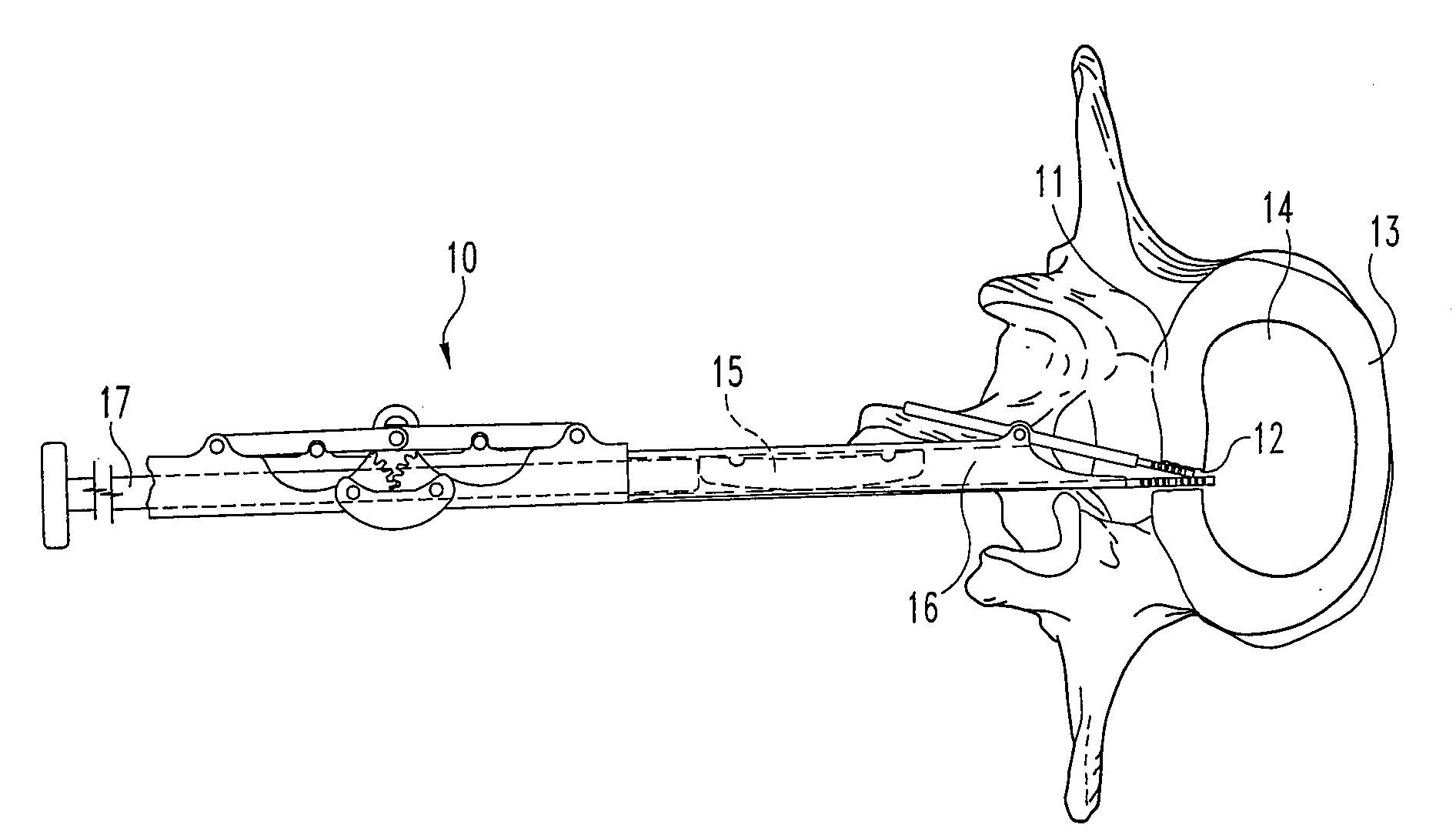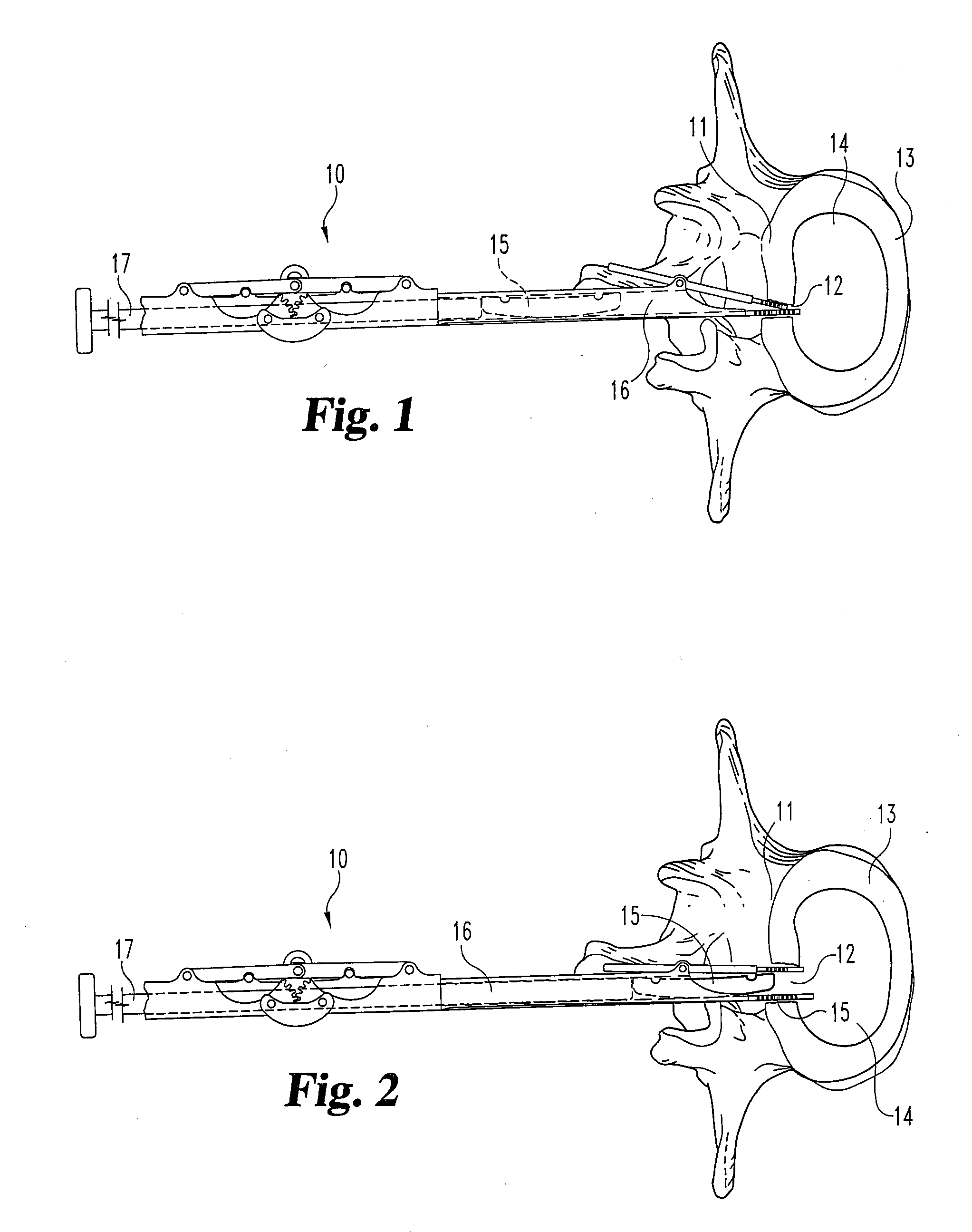Method and apparatus for delivering an intervertebral disc implant
a technology of intervertebral discs and implants, which is applied in the field of spinal implants, can solve the problems of disc shrinkage and rupture of degenerated discs, prone to injury and degeneration of intervertebral discs, and herniated discs,
- Summary
- Abstract
- Description
- Claims
- Application Information
AI Technical Summary
Problems solved by technology
Method used
Image
Examples
example 1
[0199] A medical patient is treated to replace a damaged or degenerated lumbar intervertebral disc nucleus using the procedure described below.
[0200] A / P and M / L radiographs are obtained to determine the size and shape of the affected level. The largest implant that can be accommodated by patient anatomy without overdistraction is selected, choosing among implants having footprints of 19 mm×23 mm to 22 mm×27 mm, and a height of between 6 mm and 14 mm. It is important to select the tallest device that can be accommodated by the interbody space. Excessive annulus laxity may cause non-central seating of the implant. X-ray templates are used to determine whether a small or large device footprint should be used, as are AP and ML implant outlines to determine the appropriate height.
[0201] The patient is placed in a direct prone positioned on the operating table. Bolster appropriately to maintain lumbar lordosis. C-arm fluoroscopy is not absolutely necessary for the procedure, but is pre...
PUM
| Property | Measurement | Unit |
|---|---|---|
| angle | aaaaa | aaaaa |
| angle | aaaaa | aaaaa |
| inner diameter | aaaaa | aaaaa |
Abstract
Description
Claims
Application Information
 Login to View More
Login to View More - R&D
- Intellectual Property
- Life Sciences
- Materials
- Tech Scout
- Unparalleled Data Quality
- Higher Quality Content
- 60% Fewer Hallucinations
Browse by: Latest US Patents, China's latest patents, Technical Efficacy Thesaurus, Application Domain, Technology Topic, Popular Technical Reports.
© 2025 PatSnap. All rights reserved.Legal|Privacy policy|Modern Slavery Act Transparency Statement|Sitemap|About US| Contact US: help@patsnap.com



